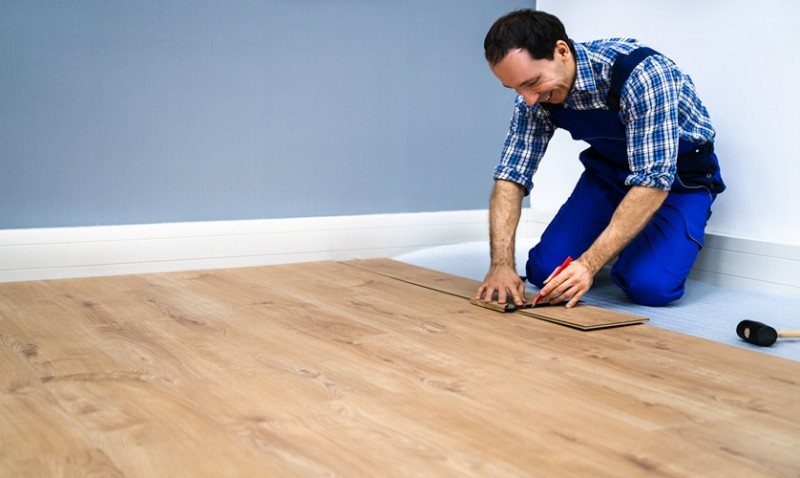
If you've been diving into the world of interior finishes, particularly for wood surfaces, you've probably heard the term "hardwax oil" tossed around quite a bit. And you might be thinking—WTF are hardwax oils? Are they just another buzzword, or is there real substance behind the hype?
Whether you're a weekend-warrior DIY enthusiast, a style-savvy young professional giving your flat a glow-up, an architect specifying materials, or a skilled tradesperson working on luxury fit-outs, understanding hardwax oils could be a game-changer for your projects. This blog post breaks down everything you need to know about hardwax oils—in plain English.
What Exactly Are Hardwax Oils?
Hardwax oils are a premium wood finish that combine the best properties of oils and waxes to protect wooden surfaces. Where traditional finishes like varnish form a film over the wood, hardwax oils penetrate the surface while leaving a protective layer that’s breathable and exceedingly durable.
They’re crafted using natural oils (like linseed, sunflower, or soybean oil) blended with hard waxes (such as carnauba or candelilla wax). This fusion results in a finish that enhances the grain and tone of wood, offering a warm and natural look—minus the glossy plastic sheen often seen with polyurethane finishes.
The magic lies in their dual-action nature. The oils soak into the wood to nourish it from within, while the waxes create a protective, microporous surface. That means the wood can still “breathe”, adjusting naturally to indoor humidity without cracking or peeling.
Hardwax oils are widely used on floors, furniture, kitchen worktops, wall cladding, and other high-traffic timber surfaces. With the growing trend of minimalism and sustainability in UK interiors, they’re becoming the go-to finish for anyone who wants visual appeal with long-term practicality.
Why Are They So Popular in the UK Right Now?
There’s a noticeable shift in the UK market towards natural, tactile interior finishes—and hardwax oils cater perfectly to that demand. Brits are embracing Scandi-inspired design, rustic textures, and conscious consumerism. Hardwax oils align with these values while ticking all the boxes for performance and beauty.
Many UK homeowners and designers are turning away from synthetic finishes. Hardwax oils, especially when made with plant-derived ingredients, are low in VOCs (volatile organic compounds), making them a smart choice for eco-conscious consumers.
Housing in cities like London, Manchester, and Edinburgh is increasingly compact. That means people want surfaces that can take a beating—especially floors and worktops—while still looking good. Hardwax oils offer durability without a sterile look.
And let’s face it: no-one wants to refinish their wooden floor every other year. Hardwax oils are extremely easy to spot-repair and maintain without sanding the whole surface, making them especially appealing to DIYers and tradesmen alike.
Application: Not Just for Pros
One of the best things about hardwax oils is their beginner-friendly application process. While professionals definitely appreciate the control and finesse they offer, hardwax oils are accessible enough for enthusiastic first-time decorators to use with confidence.
Application typically involves cleaning and lightly sanding the wood, then applying the oil with a cloth, brush, or pad. After a short drying period—often overnight—you buff it down or apply a second coat for extra durability. Some products even come as “one coat” systems for smaller jobs.
Unlike varnishes, there’s no need for PPE-level safety gear or ventilation nightmares, especially with low-VOC options. Just use common sense: gloves, a window open, and a steady hand.
It’s also quite forgiving. Got a patchy area? Just reapply in that section and blend—it won’t look like a blotchy mess. For busy professionals with limited time or tradesmen juggling projects, that flexibility is gold.
Where Can You Use Hardwax Oils?
The versatility of hardwax oils is another point in their favour. They’re suitable for a wide range of wood types and indoor surfaces, such as oak, ash, pine, walnut, and beech. They're popular in both modern apartments and heritage homes across the UK.
Here are some ideal applications:
- Wooden Floors: From engineered oak planks in city homes to rustic pine in country cottages
- Furniture: Dining tables, wardrobes, and shelving units
- Staircases: Particularly banisters and treads
- Kitchen Worktops: Especially wooden countertops where food-safe finishes matter
- Wall Panelling: Adds warmth and a velvety matte look
Regardless of where they're used, the key benefit is durability matched with easy maintenance and a stunning natural finish.
Pros and Cons of Hardwax Oils
| Pros | Cons |
|---|---|
| Enhances natural wood grain and tone | May need reapplication every few years depending on wear |
| Microporous and breathable | Susceptible to water spotting if not cured properly |
| Easy to repair small sections | Not suitable for all species of oily wood without prep |
| Low VOC versions available | Drying and curing times vary |
| Perfect for DIY and professional use | Can be slippery when first applied—anti-slip options recommended for stairs/floors |
Maintenance: Super Simple
Keeping surfaces treated with hardwax oils looking their best is easy. Day-to-day cleaning involves nothing more than dry sweeping and the occasional wipe with a damp mop or cloth. No need for strong chemicals—many manufacturers offer compatible cleaners that maintain the oil's integrity.
For deeper refreshes, a gentle re-oiling of high-traffic areas (rather than stripping and starting over) is often all that's needed. That's great news for busy homeowners with zero time for weekend-long DIY messes, as well as tradesmen maintaining high-end interiors efficiently.
Pro tip: periodic maintenance will prolong the lifespan of your finish dramatically. Don’t wait until your floor looks battered—treating it once or twice a year keeps it looking brilliant.
Top Brands Available in the UK
The UK offers a wide selection of high-quality, trusted hardwax oils. Here are a few brands worth looking into:
- Osmo: The leading German brand known for their Polyx-Oil, widely used in the UK
- Fiddes: Traditional British brand loved by professionals
- Treatex: Eco-conscious and effective, often compared to Osmo
- Blanchon: A premium French brand gaining traction for modern interiors
Before choosing, check if the oil is suited for your specific application—some are optimised for floors, others for furniture or kitchens. And always choose a colour that enhances your space; many oils come with pigments to subtly tint the wood while adding character.
Final Thoughts: Is Hardwax Oil Right for You?
If you value a natural look, want a finish that stands up to daily life, and appreciate low-maintenance upkeep, hardwax oils are absolutely worth considering. They're friendly to users and the environment, beautifully enhance any timber surface, and slot neatly into both modern and traditional interiors across the UK.
Ready to give your space a timeless upgrade? It might just be time to say WTF yes—to hardwax oils.






